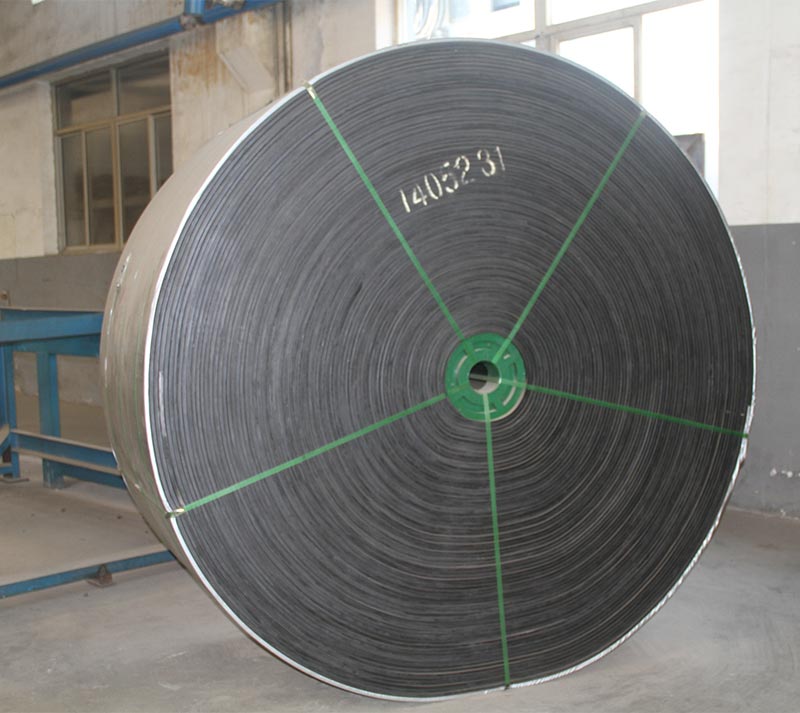E-mail : huayun@bdhyjx.com
Belt conveyor series exporter shares with you.
1. Common faults: the motor cannot start or slow down immediately after starting.
Failure analysis: a. line failure; b. voltage drop; c. contactor failure; d. continuous operation within 1.5 seconds.
Treatment methods: check the line; check the voltage; check the overloaded electrical appliances; reduce the number of operations.
2. Common faults: the motor heats up
Analysis of the cause of the failure: due to overload, overlength, or conveyor belt being stuck, the operating resistance will increase and the motor will operate in an overload condition. The motor power increases due to the poor lubrication condition of the transmission system; The accumulation of dust in the motor's fan air inlet or radial-radiating plate worsens the heat dissipation condition.
Treatment method: measure the motor power, find out the cause of overload operation, and treat it symptomatically; add lubrication to each transmission part in time; remove dust.
3. Common faults: when the full load, the fluid coupling cannot transmit the rated torque
Analysis of the cause of the failure: insufficient oil in the fluid coupling.
Treatment method: refueling (when the two motors are driven, the two motors must be measured with an ammeter. The power tends to be consistent by investigating the amount of oil-filled.)

5. Common faults: reducer overheating
Analysis of the cause of the failure: too much or too little oil in the reducer; the oil has been used for too long; the lubrication conditions have deteriorated and the bearings have been damaged.
Treatment method: Fill oil according to the specified amount; clean the inside, change the oil in time to repair or replace the bearing, and improve the lubrication conditions.
6. Common faults: deviation of conveyor belt
Analysis of the cause of the failure: the frame and the roller are not adjusted straight; the axis of the roller is not perpendicular to the centerline of the conveyor belt; the joint of the conveyor belt is not perpendicular to the centerline, and the edge of the conveyor belt is S-shaped; the loading point is not in the center of the conveyor belt (partial load).
Treatment method: adjust the frame or roller to keep it straight; use the roller to adjust the position to correct the deviation of the conveyor belt; re-do the joint to ensure that the joint is perpendicular to the center of the conveyor belt; adjust the position of the coal drop point.
7. Common faults: aging and tearing of conveyor belt
Analysis of the cause of the failure: friction between the conveyor belt and the frame results in bristle pulling and cracking; The interference between the conveyor belt and the fixed hard object causes tearing; Improper storage, excessive tension; Laying too short to generate flexure times exceeding the limit, resulting in premature aging.
Treatment method: adjust in time to avoid long-term deviation of the conveyor belt; prevent the conveyor belt from hanging on the fixed member or falling into the metal structure in the conveyor belt; store according to the storage requirements of the conveyor belt; try to avoid short-distance laying and use.
8. Common faults: broken tape
Analysis of the cause of the failure: the material of the belt is not suitable, and it becomes hard and brittle when it is exposed to water and cold; the conveyor belt is used for a long time, and its strength becomes poor; the quality of the conveyor belt joint is not good, and the local cracks are not repaired or re-punched in time.
Treatment method: Use materials with stable mechanical and physical properties to make the belt core; replace damaged or aging conveyor belts in time; often observe the joints and deal with problems in time.
9. Common faults: skid
Analysis of the cause of the failure: insufficient tension of the conveyor belt and excessive load; the coefficient of friction between the drive roller and the conveyor belt is reduced due to water spray; beyond the range of use, the conveyor is inclined downward.
Treatment method: readjust the tension or reduce the transportation volume; eliminate the water spray and increase the tension; often observe the joints and deal with the problems in time.
Copyright © Baoding Huayun Conveyor Machinery Co., Ltd. All Rights Reserved | Sitemap |






